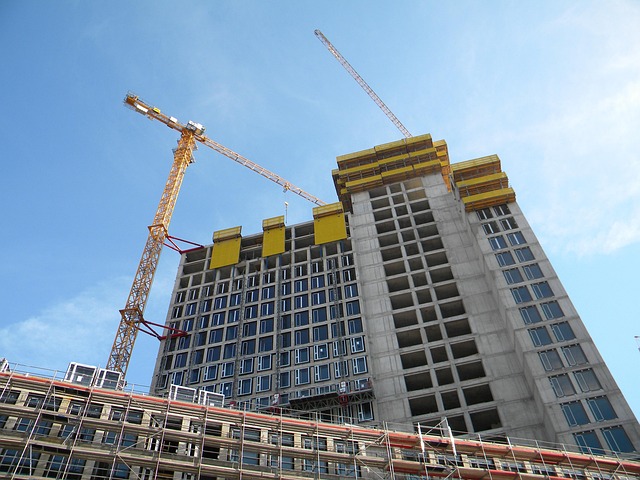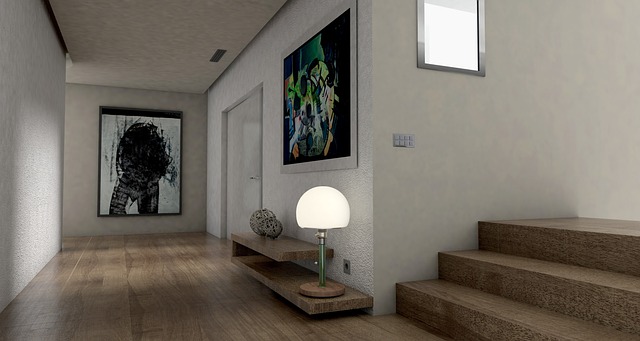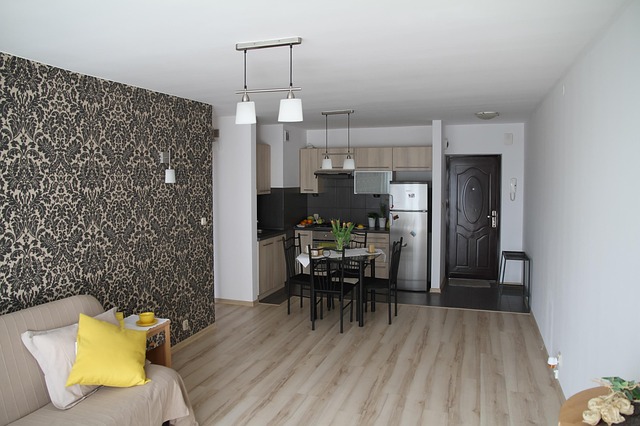Glulam (Glue-Laminated Timber) is an innovative, sustainable construction material renowned for its exceptional strength-to-weight ratio and eco-friendly properties. By gluing multiple thin timber layers together, Glulam offers structural advantages, including superior load-bearing capabilities, making it a viable alternative to steel or concrete. Its versatility enables intricate designs in bridge building and custom homes while aligning with sustainability goals. Glulam's benefits include reduced carbon emissions, efficient prefabrication, and the ability to accommodate complex geometric forms. Despite initial processing challenges, technological advancements and growing demand are making Glulam increasingly accessible and cost-effective, positioning it as a mainstream choice for sustainable infrastructure projects worldwide.
“Glulam, a revolutionary material made from gluing together laminaated wood strands, is transforming sustainable infrastructure. This innovative construction method offers a renewable alternative to traditional building materials, contributing significantly to environmental preservation. From its ecological benefits to its role in resilient architecture, glulam is a game-changer for green building projects. Dive into this comprehensive guide exploring the understanding, advantages, and future prospects of glulam as we navigate towards a more sustainable tomorrow.”
- Understanding GLULAM: A Renewable Material for Modern Construction
- The Environmental Benefits of Using Glulam in Infrastructure Development
- How GLULAM Contributes to Sustainable and Resilient Architecture
- Case Studies: Successful Implementation of GLULAM in Green Building Projects
- Overcoming Challenges: Processing, Cost, and Availability of GLULAM
- The Future of GLULAM: Trends and Innovations for a Greener Tomorrow
Understanding GLULAM: A Renewable Material for Modern Construction
Glulam, short for Glulated Laminated Timber, is a cutting-edge material that revolutionizes modern construction with its remarkable strength-to-weight ratio and renewable nature. This innovative product is created by gluing together multiple layers of thin timber lams, resulting in structural elements that are both remarkably strong and environmentally friendly.
GLULAM offers significant advantages for various construction projects, particularly in the realms of glulam applications in bridge building and glulam for custom homes. Its structural advantages include superior load-bearing capabilities, making it a viable alternative to traditional steel or concrete in many instances. The versatility of GLULAM allows for intricate designs, enabling architects and builders to create aesthetically pleasing spaces while adhering to strict sustainability goals.
The Environmental Benefits of Using Glulam in Infrastructure Development
The use of glulam (glue-laminated timber) in infrastructure development offers a sustainable and environmentally friendly alternative to conventional building materials. Glulam is produced by laminating multiple layers of wood with glue, creating strong and durable structural elements. This process not only utilises fast-growing and renewable timber resources but also minimises waste compared to traditional construction methods that often rely on energy-intensive manufacturing processes and non-sustainable materials like concrete and steel.
One of the key advantages of glulam is its potential for reducing carbon emissions. As a natural material, it has a lower carbon footprint than many synthetic alternatives. Furthermore, glulam construction speed and efficiency are notable benefits, as these laminated timbers can be prefabricated off-site, enabling faster installation and reducing construction time on-site. Glulam solutions for complex geometry also allow for intricate designs, showcasing the versatility of this material in modern architecture and engineering while maintaining a focus on sustainability.
How GLULAM Contributes to Sustainable and Resilient Architecture
GLULAM (Glulam) is a revolutionary material in the realm of sustainable and resilient architecture. This engineered wood product, crafted through specialized glulam construction techniques, offers unparalleled strength-to-weight ratios, making it an eco-friendly alternative to conventional building materials. By utilizing glulam panels for roof systems, architects and engineers can create structures that are not only visually striking but also highly efficient in terms of energy consumption.
The manufacturing process of GLULAM involves stringent quality control measures, ensuring consistent performance and durability. This attention to detail is pivotal in creating sustainable infrastructure that stands the test of time. Moreover, glulam construction techniques allow for complex geometric designs, enabling architects to push boundaries while maintaining structural integrity. In today’s world, where resilience against natural disasters is paramount, GLULAM’s superior strength makes it a game-changer in building sustainable communities capable of withstanding the elements.
Case Studies: Successful Implementation of GLULAM in Green Building Projects
The successful integration of GLULAM (Glulam) in green building projects has solidified its place as a leading material in sustainable infrastructure. Case studies from around the globe showcase the versatility and durability of GLULAM, demonstrating its ability to enhance structural integrity while minimizing environmental impact. These engineering marvels of GLULAM are a testament to modern construction techniques, offering efficient and eco-friendly alternatives to traditional building methods.
For instance, several notable green buildings have utilized GLULAM for their structural frames, highlighting the material’s superior strength-to-weight ratio and reduced carbon footprint. The manufacturing quality control processes ensure that each GLULAM component meets stringent performance standards, contributing to the overall reliability of these structures. Design considerations for wind load, a critical aspect in many regions, have been expertly addressed in these projects, showcasing the adaptability of GLULAM to various structural challenges while maintaining aesthetic appeal and energy efficiency.
Overcoming Challenges: Processing, Cost, and Availability of GLULAM
Overcoming Challenges: Processing, Cost, and Availability of GLULAM
The growing demand for sustainable infrastructure has pushed the construction industry to explore innovative materials like glulam (glue-laminated timber). Despite its numerous environmental benefits and superior structural integrity testing results, the adoption of glulam faces challenges related to processing, cost, and availability. Processing requires specialized techniques and equipment, which can be a significant barrier for smaller contractors. However, advances in technology and increasing demand are gradually improving accessibility and reducing costs.
GLULAM construction speed and efficiency have also been highlighted as key advantages over traditional materials. The prefabricated nature of glulam components allows for faster assembly on-site, minimizing construction time and labor costs. Moreover, glulam solutions for complex geometry offer designers and architects greater freedom in creating unique and sustainable structures. As the market continues to evolve, addressing these initial challenges will further propel GLULAM towards becoming a mainstream choice for sustainable infrastructure projects.
The Future of GLULAM: Trends and Innovations for a Greener Tomorrow
The future of GLULAM (Glulam) holds immense potential as we shift towards a greener and more sustainable tomorrow. This innovative structural material, crafted from laminated timber, is poised to revolutionize the construction industry by offering a viable alternative to traditional lumber. In a world where environmental concerns are at the forefront, GLULAM’s benefits are becoming increasingly evident. Its production involves responsible forest management, ensuring a renewable resource that can compete with conventional building materials in terms of strength and durability.
Looking ahead, trends suggest a growing adoption of GLULAM for sustainable infrastructure projects. The ability to create complex geometric forms makes it an ideal solution for modern architecture’s unique designs. As researchers explore new manufacturing techniques, the material’s properties are being enhanced, allowing for larger span structures and improved structural integrity. This evolution promises to reduce the carbon footprint associated with construction, making GLULAM a game-changer in the quest for eco-friendly buildings and infrastructure. Compared to traditional lumber, GLULAM offers superior strength-to-weight ratios, contributing to more efficient construction processes and reduced environmental impact.
Glulam, as a renewable and sustainable material, is revolutionizing infrastructure development. Its environmental benefits, combined with its role in creating resilient and eco-friendly architecture, make it an increasingly popular choice for green building projects. Overcoming processing, cost, and availability challenges paves the way for a brighter future where glulam plays a pivotal role in shaping a greener tomorrow. As we explore emerging trends and innovations, it’s evident that this versatile material will continue to be a game-changer in sustainable infrastructure.







